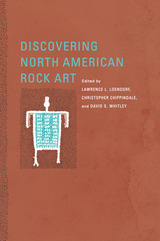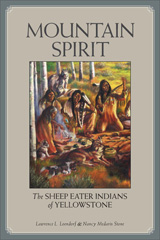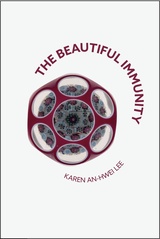3 books by Loendorf, Lawrence L

Discovering North American Rock Art
Edited by Lawrence L. Loendorf, Christopher Chippindale, and David S. Whitley
University of Arizona Press, 2005
From the high plains of Canada to caves in the southeastern United States, images etched into and painted on stone by ancient Native Americans have aroused in observers the desire to understand their origins and meanings. Rock paintings and engravings can be found in nearly every state and province, and each region has its own distinctive story of discovery and evolving investigation of the rock art record. Rock art in the twenty-first century enjoys a large and growing popularity fueled by scholarly research and public interest alike. This book explores the history of rock art research in North America and is the only volume in the past twenty-five years to provide coverage of the subject on a continental scale. Written by contributors active in rock art research, it examines sites that provide a cross-section of regions and topics and complements existing books on rock art by offering new information, insights, and approaches to research. The first part of the volume explores different regional approaches to the study of rock art, including a set of varied responses to a single site as well as an overview of broader regional research investigations. It tells how Writing-on-Stone in southern Alberta, Canada, reflects changing thought about rock art from the 1870s to today; it describes the role of avocational archaeologists in the Mississippi Valley, where rock art styles differ on each side of the river; it explores discoveries in southwestern mountains and southeastern caves; and it integrates the investigation of cupules along Georgia’s Yellow River into a full study of a site and its context. The book also compares the differences between rock art research in the United States and France: from the outset, rock art was of only marginal interest to most U.S. archaeologists, while French prehistorians considered cave art an integral part of archaeological research. The book’s second part is concerned with working with the images today and includes coverage of gender interests, government sponsorship, the role of amateurs in research, and chronometric studies. Much has changed in our understanding of rock art since Cotton Mather first wrote in 1714 of a strange inscription on a Massachusetts boulder, and the cutting-edge contributions in this volume tell us much about both the ancient place of these enduring images and their modern meanings. Discovering North American Rock Art distills today’s most authoritative knowledge of the field and is an essential volume for both specialists and hobbyists.
[more]

Mountain Spirit
The Sheep Eater Indians of Yellowstone
Loendorf, Lawrence L
University of Utah Press, 2006
There is still a pervasive notion that Indians did not inhabit the Yellowstone area. Drawing on the results of ongoing archaeological excavations and extensive ethnographic work among descendant native peoples, Mountain Spirit discusses the many groups that have in fact visited or lived in the area in prehistoric and historic times. In particular, the Shoshone group known as Tukudika, or Sheep Eaters, maintained a rich and abundant way of life closely related to their primary source of protein, the mountain sheep of the high-altitude Yellowstone area.
These robust people were talented artisans, making well-constructed shelters, powerful horn bows, and expertly tailored clothing that was highly sought by their trading partners. They moved in small, kin-based bands, accompanied by large dogs that were indispensable hunting and trekking companions. Moving seasonally through portions of the Beartooth, Absaroka, and Wind River ranges, the Sheep Eaters made skillful use of their environment.
Written for general readers, Mountain Spirit includes photographs, lithographs, and a number of color drawings and sketches of Sheep Eater life ways by Davíd Joaquin. It presents a vivid picture of the vanished way of life of a people whose accomplishments have been largely ignored in histories of Native peoples.
[more]

Ten Steps for Recording Pictographs and Petroglyphs
Methods and Technologies
Lawrence Loendorf and Nancy Medaris Stone
University of Utah Press, 2024
Pictograph and petroglyph sites, commonly identified as sacred by Indigenous communities, offer the potential of great insight into past belief systems and ritual activities if carefully recorded. The aesthetic appeal of the art itself has long been appreciated, and chemical and artistic analyses have been applied to these depictions to uncover deeper information such as chronology and pigment composition. In Ten Steps for Recording Pictographs and Petroglyphs, Lawrence Loendorf and Nancy Medaris Stone present their thorough and systematic ten-step guide to recording not just the imagery itself, but also the entire site amid which it is set. This essential context situates the depictions within the immediate and broader landscape, assembling a more complete picture of their significance.
Despite having survived for thousands of years, erosion, decay, and even vandalism are all threats to these important cultural sites. A field session involving documentation might be the only opportunity to record these unique and significant images. The ten steps laid out here by Loendorf and Stone offer a general overview of current best practices to maintain a scientific and professional documentation program.
Despite having survived for thousands of years, erosion, decay, and even vandalism are all threats to these important cultural sites. A field session involving documentation might be the only opportunity to record these unique and significant images. The ten steps laid out here by Loendorf and Stone offer a general overview of current best practices to maintain a scientific and professional documentation program.
[more]
READERS
Browse our collection.
PUBLISHERS
See BiblioVault's publisher services.
STUDENT SERVICES
Files for college accessibility offices.
UChicago Accessibility Resources
home | accessibility | search | about | contact us
BiblioVault ® 2001 - 2024
The University of Chicago Press









